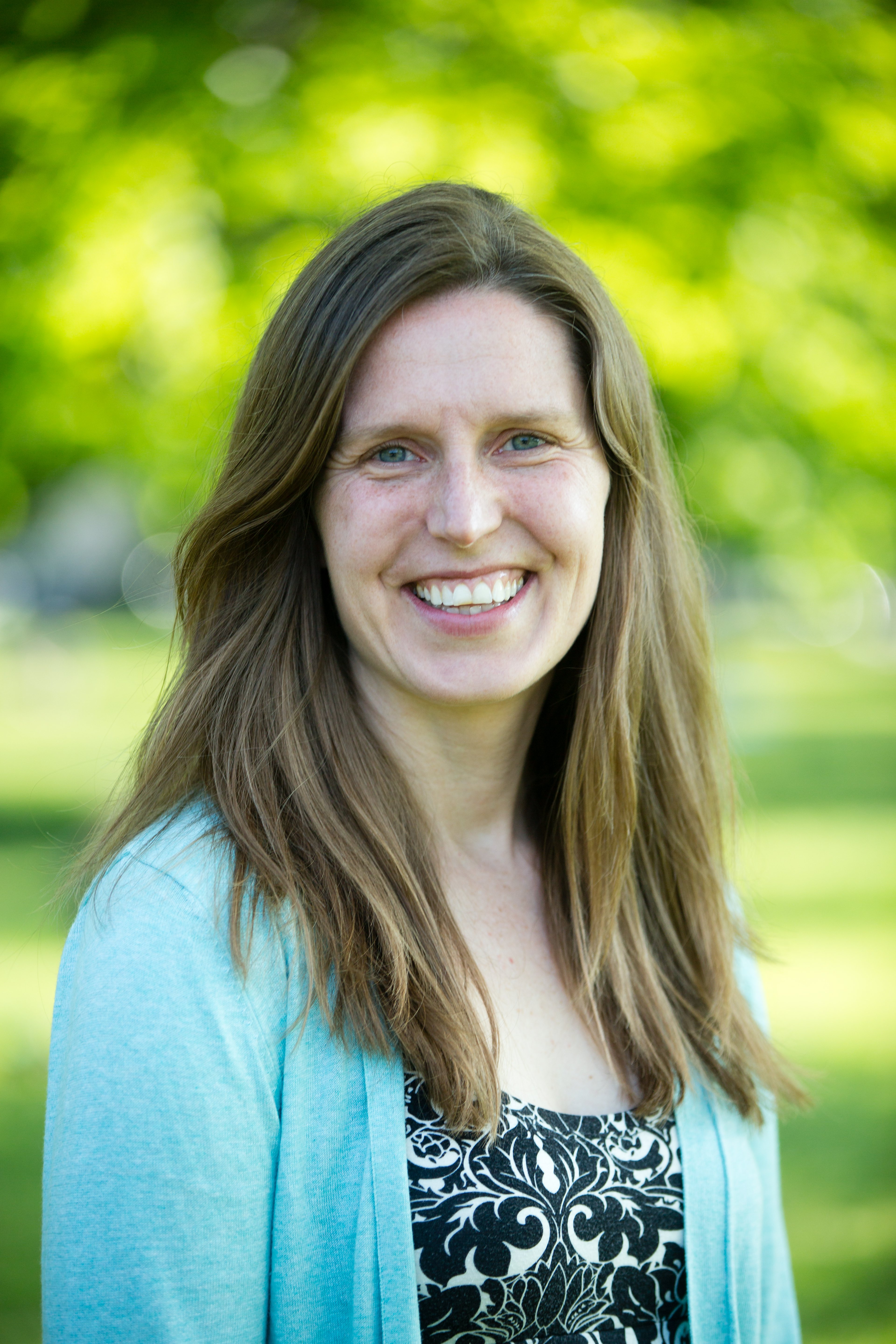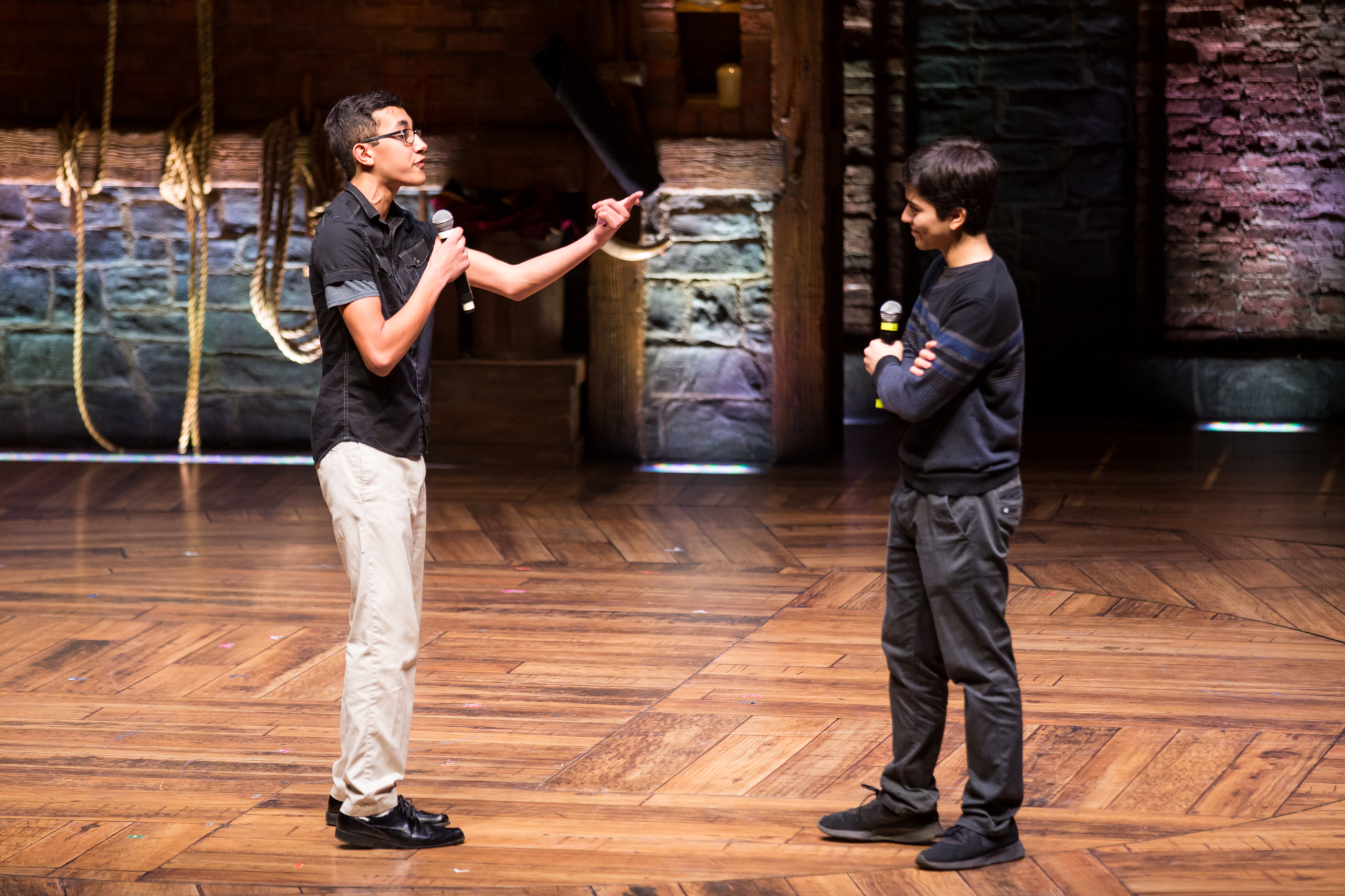Teacher Meghan Thomas’s Gilder Lehrman Experience
Posted by Gilder Lehrman Institute Staff on Wednesday, 01/17/2018
Meghan Thomas is the 2016 Illinois History Teacher of the Year and teaches at Von Steuben Metropolitan Science Center in Chicago, Illinois. Last February, she and her students took part in the Hamilton Education Program. Here, she talks about her experience in a broad range of Gilder Lehrman programs, from Student Essay Contests to Teacher Seminars:
How did you get started with the Gilder Lehrman Institute?  Honestly, I can’t remember how I first became aware of the Gilder Lehrman Institute. It may have been through a colleague or an online search for materials, but I do know that once I started using the Gilder Lehrman website, I never stopped! When I first found the wealth of materials on the site, it became a frequent go-to for all of my US history curriculum needs. I introduced it to my husband who was a high school teacher and is now a doctoral student in history, and he listened to seemingly every available video of historians’ lectures. Those lectures have come in handy in both AP US History and my other US history classes both to show students what historians do and how they communicate, and to cover topics quickly. The availability of primary and secondary sources written or curated by knowledgeable historians makes my job easier and more enjoyable!
Honestly, I can’t remember how I first became aware of the Gilder Lehrman Institute. It may have been through a colleague or an online search for materials, but I do know that once I started using the Gilder Lehrman website, I never stopped! When I first found the wealth of materials on the site, it became a frequent go-to for all of my US history curriculum needs. I introduced it to my husband who was a high school teacher and is now a doctoral student in history, and he listened to seemingly every available video of historians’ lectures. Those lectures have come in handy in both AP US History and my other US history classes both to show students what historians do and how they communicate, and to cover topics quickly. The availability of primary and secondary sources written or curated by knowledgeable historians makes my job easier and more enjoyable!
What GLI programs have you taken part in? Do you have a favorite?
The first program I had students participate in was an essay contest. My students write essays for National History Day every year, and one year I had my AP US History class submit their essays to the Civil War Essay Contest as well. I wasn’t sure if they would be excited, because they often choose more modern topics for their research, but they found topics they were interested in and worked with local archives to find primary sources. I had students look into Zouave soldiers, Confederate prisons, women who dressed as men to join the war, and black regiments. The variety of topics surprised both them and me. It made the Civil War a more complicated and interesting narrative for my students.
In 2014 I attended a summer Teacher Seminar called “Southern Fictions: Literature and History of the American South” in New Orleans. As an avid reader of fiction, I was interested in how I could better use novels and short stories in my classes. The seminar gave me ideas about how to use fiction to talk about American memory and how people consume history. I’ve used this several times in both my US history and Chicago history classes. The professor and participants were engaging and helpful throughout. It was one of the most valuable professional development experiences I have had, and I can’t wait to do another one this summer!
Further, I was chosen as the Illinois History Teacher of the Year for 2016. I was honored to be chosen, and grateful for the opportunity to go to a Teacher Seminar again. I love the HTOY program for a few reasons. First, it allows history teachers, who are often seen as secondary to STEM educators, to be recognized. The social sciences, in my opinion, are too often overshadowed by subjects that are more directly seen on standardized tests. Secondly, HTOY was an opportunity for me to show that city schools have great teachers. As a Chicago public school teacher, I get frustrated at how negative the view of teachers can be both politically and in the media. I work with wonderful and dedicated teachers in my school and have collaborated with inspiring teachers from all over the city. Gilder Lehrman has given this award to two CPS teachers over the past two years, and I am grateful to the Institute for showing our hard work!
Last February, your school took part in the Hamilton Education Program. What was that experience like, both for you and for your students? I couldn’t believe my luck when I heard that the Hamilton program was coming to Chicago! I don’t know if I’ve ever been so excited as a teacher. I waited with anticipation to see if we were eligible and chosen (we were!), and I poured over the materials, excited to share them with kids. For me, the program was eye-opening. I realized that many of my students had not heard of the play and had no idea why I was so excited. They approached the work tentatively, but most got engaged and interested as they read and discussed the sources they were given and as they wrote their own pieces. The students got more out of the performance because of their primary source work beforehand. They understood the story better and were able to follow it. In their post-performance reflections they talked about how impressed they were by the actors, how engaging and dramatic the story had been, and how they wanted to know more about Hamilton because of the experience. They loved it!
I couldn’t believe my luck when I heard that the Hamilton program was coming to Chicago! I don’t know if I’ve ever been so excited as a teacher. I waited with anticipation to see if we were eligible and chosen (we were!), and I poured over the materials, excited to share them with kids. For me, the program was eye-opening. I realized that many of my students had not heard of the play and had no idea why I was so excited. They approached the work tentatively, but most got engaged and interested as they read and discussed the sources they were given and as they wrote their own pieces. The students got more out of the performance because of their primary source work beforehand. They understood the story better and were able to follow it. In their post-performance reflections they talked about how impressed they were by the actors, how engaging and dramatic the story had been, and how they wanted to know more about Hamilton because of the experience. They loved it!
What GLI programs or resources do you feel have given you the most support in your teaching?
The Hamilton Education Program is hard to beat. Primary sources, lesson plans, and videos are provided to help students learn about and engage in the history of the Founding Era. However, all of the programs I’ve been a part of have made me reimagine the way that I teach.